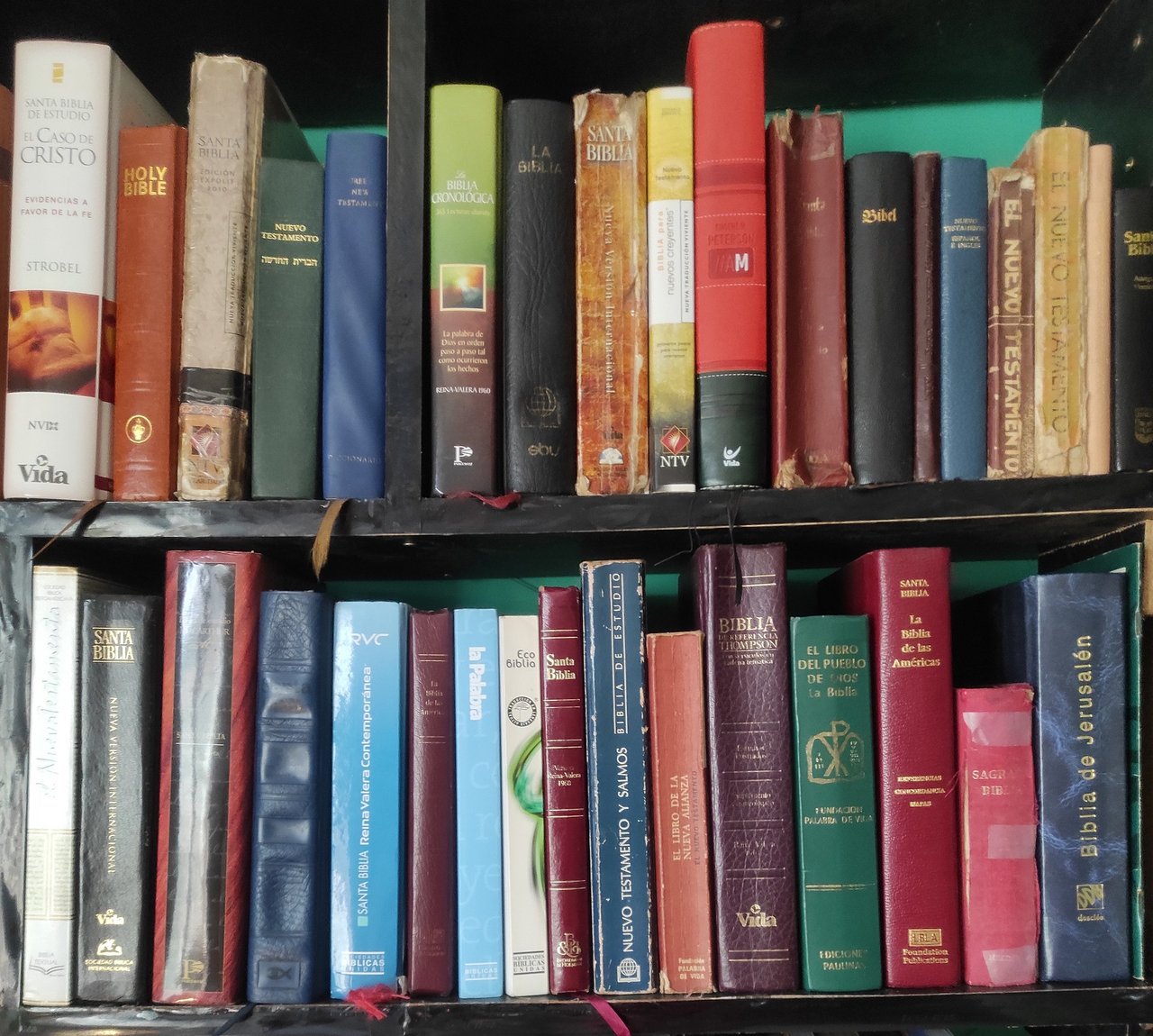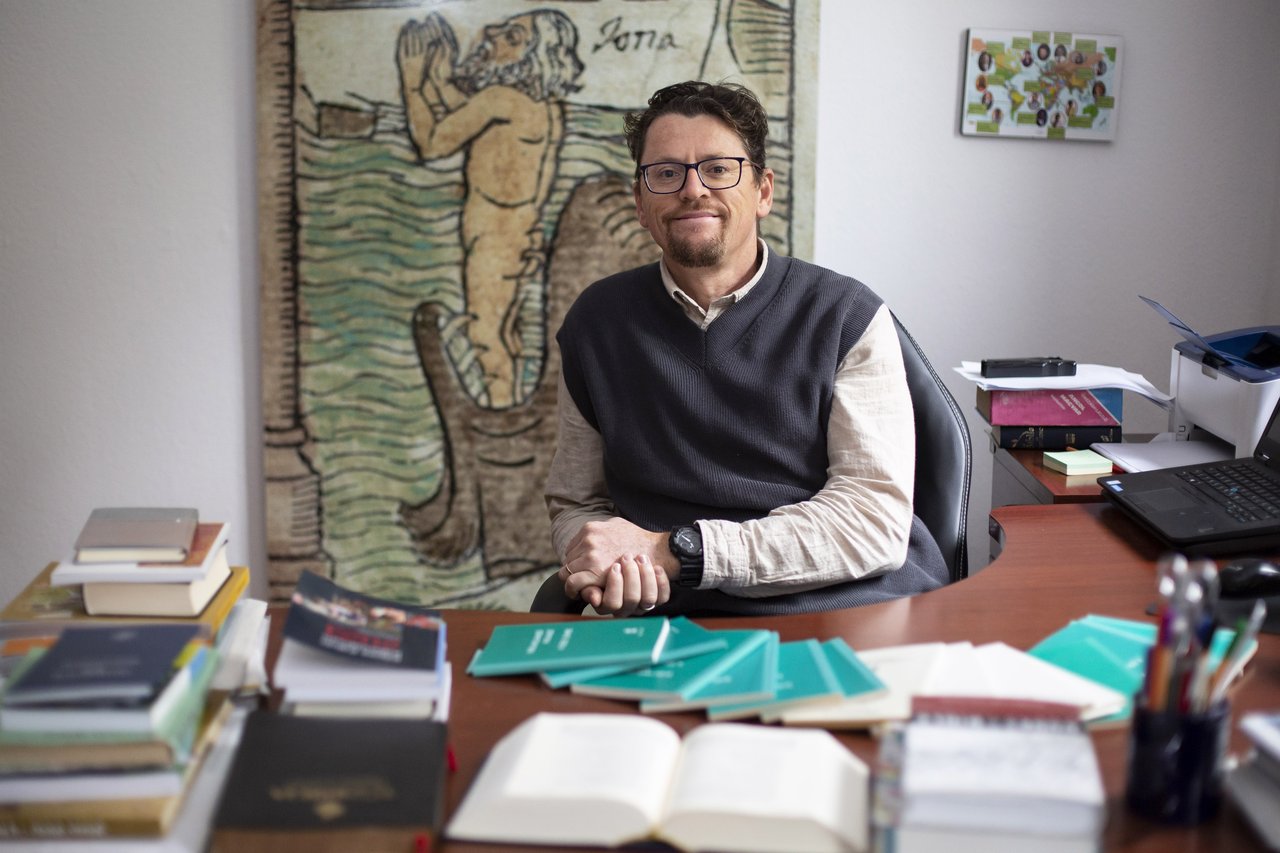The first truly ecumenical Bible translation in Hungarian is being prepared. Protestant and Catholic biblical scholars are working together on the ambitious project. The first fruit of the enterprise, the first letter of the apostle Peter, is already available. The ecumenical publication is not intended to replace existing Bibles but to produce a text that is more dynamic, accessible and easier to understand than the traditional translations in liturgical use in churches.
The work is coordinated by Ottó Pecsuk, General Secretary of the Hungarian Bible Society. We asked the Reformed pastor and New Testament scholar about the joint work. “We reached an important milestone with the online publication of the first letter of the apostle Peter. As a next step, we will bring out the Old Testament book of Ruth, which will be available before Easter. The Gospels of Matthew and Mark and the Book of Judges from the Old Testament have been completed, and the translation of the first book of Samuel is under way. If the test translations are well received, we will be able to launch the other books relatively quickly," said Ottó Pecsuk, describing the current situation and the near future.
The work on the new ecumenical Bible translation started in 2017. The Hungarian Catholic Bishops' Conference entrusted Rózsa Huba (and after his death in 2023, Csaba Racs), György Fodor, Imre Kocsis and Balázs Levente Martos with the task of representing the Roman Catholic Church in the committee tasked with the translation. The Hungarian Bible Society, representing the twelve Protestant and Orthodox churches, appointed the theologians Károly Bácskai (Lutheran), Péter Balla, István Karasszon and József Zsengellér (Reformed) to the task force. The work has been coordinated by Ottó Pecsuk, General Secretary of the Hungarian Bible Society and Reformed pastor. Rita Krisztina Molnár serves as language consultant and editor.
“After the preparation, the translation of the ecumenical Bible was slowed down by the COVID pandemic, and the actual translation work could only start in 2022-2023. In addition to the Catholic Church, a total of twelve denominations in Hungary are participating in the large-scale project: the member churches of the Hungarian Bible Society, including the Protestant and Orthodox denominations. Two Catholic and two Protestant translators are involved in the work, one for the Old Testament and one for the New Testament each. For the time being, all but the language editor are doing this work alongside their existing ecclesiastical duties, out of dedication and love for the Scriptures and the Church.”

Commenting on the language of the translation, Otto Pecsuk stressed that the new translation places greater emphasis than the previous ones on good Hungarian, ease of reading and clarity. “In order not to be determined and guided by possible disputes over different ecclesiastical language or biblical interpretation, we are careful not to approach the Bible from our own denominational perspective, but to seek the original meaning of the text in today's Hungarian, so that controversial issues can be avoided,” the theologian explained.

Ottó Pecsuk, General Secretary of the Hungarian Bible Society
He added that, in addition to the original languages of the Bible, Hebrew and Greek, other ecumenical translations were also helpful. Such translations have already appeared in many African countries, as well as in French, English, Italian and Slovak. These have also been used as models, but the translations are, of course, from the original languages. Ottó Pecsuk explained that the method used to draft the text was different from that used in previous Bible translations: "This time, the language proof-reader worked by comparing the Hungarian translations to produce a stylistically acceptable text, which was then refined by biblical experts on the basis of the original texts. The advantage of this method is that an accurate but badly styled text is more difficult to correct and more likely to become a "translation-flavoured" text. On the other hand, in an inaccurate text with a good translation, words and phrases are easier to clarify," he added.
As for working together, the pastor mentioned that they learned together and from each other. In developing the language, they have tried and will continue to try to find new approaches to some traditional biblical expressions. They do not approach the tasks from the point of view of differences. Certain theological terms are common, familiar usage typical of one denomination or another.
For example, what Catholics call "invitation" is often referred to as "calling" by Protestants. Catholics speak of the 'outpouring' of the Holy Spirit, Protestant communities speak more of the 'filling' or 'filling up' of the Spirit. The same dilemma has arisen with proper names, several of which appear differently in the bibles. There are also differences between the Protestant and Catholic canons: the list of accepted books in the Catholic Old Testament is seven more than in the Protestant Scriptures. The bridging solution is to have a separate collection of books between the Old and New Testaments, these being the apocryphal books. This will make the Bible complete for each denomination. "We want a text that is easy to understand and easy to read. And sometimes this is better served by a new translation than by a selection from the usual set. Those who are affiliated with a particular denomination usually have a standard translation of the Bible, so the ecumenical publication is in no way intended to replace the existing Bible translations," the secretary general of the Hungarian Bible Society stressed.

One of the important results of the joint work is that the new publication will be an accepted translation of the Hungarian Christianity. If it is successful, it will find its own readers and, it is hoped, it will also be of missionary benefit, i.e. it will win new readers for the Bible. Christian churches hope that the new ecumenical text will also appeal to those who do not use the established denominational Bible translations. Many people in our country live in mixed-denominational marriages and families, for whom, for example, a new "common" Bible translation could be important.
Those involved in the work also hope that the new translation can reach younger generations who are not denominationally committed. They see it as their mission to make reading the Bible attractive to people who are not church-going. "We are aware that a new initative with many contributors has its 'teething problems', we are learning from them and we are looking for comments on the trial translations," said Otto Pecsuk, whom I also asked about his personal mission. The Reformed pastor also teaches biblical studies and New Testament biblical theology at the Faculty of Theology at Károli University. "For me, this is also a personal commitment. I am interested in how to translate the Bible well, both theoretically and practically. There are several examples from abroad that are convincing to me. The preparation of the Hungarian ecumenical text is of paramount importance because it will serve the mission of the universal Church. I hope that the necessary conditions - human, financial, denominational support - will be given for the preparation of a complete Bible translation."

We also touched on how and by whom the ecumenical Bible is expected to be used in ten to fifteen years. One of the target audiences, Ottó Pecsuk explained, is the twenty- and thirty-year-old age group. We hope that the new edition will also be used in ecumenical communities and events, such as retreats, prayer meetings, summer camps and pilgrimages. Ten years down the line, I hope to complete the entire New Testament and a substantial part of the Old Testament. And in fifteen years' time, perhaps the complete Bible will be ready, with the main platforms already being online: apps, websites, e-book formats, Bible reading platforms. There will probably also be a printed Bible, but in this translation it will be more of a secondary platform," says Otto Pecsuk.